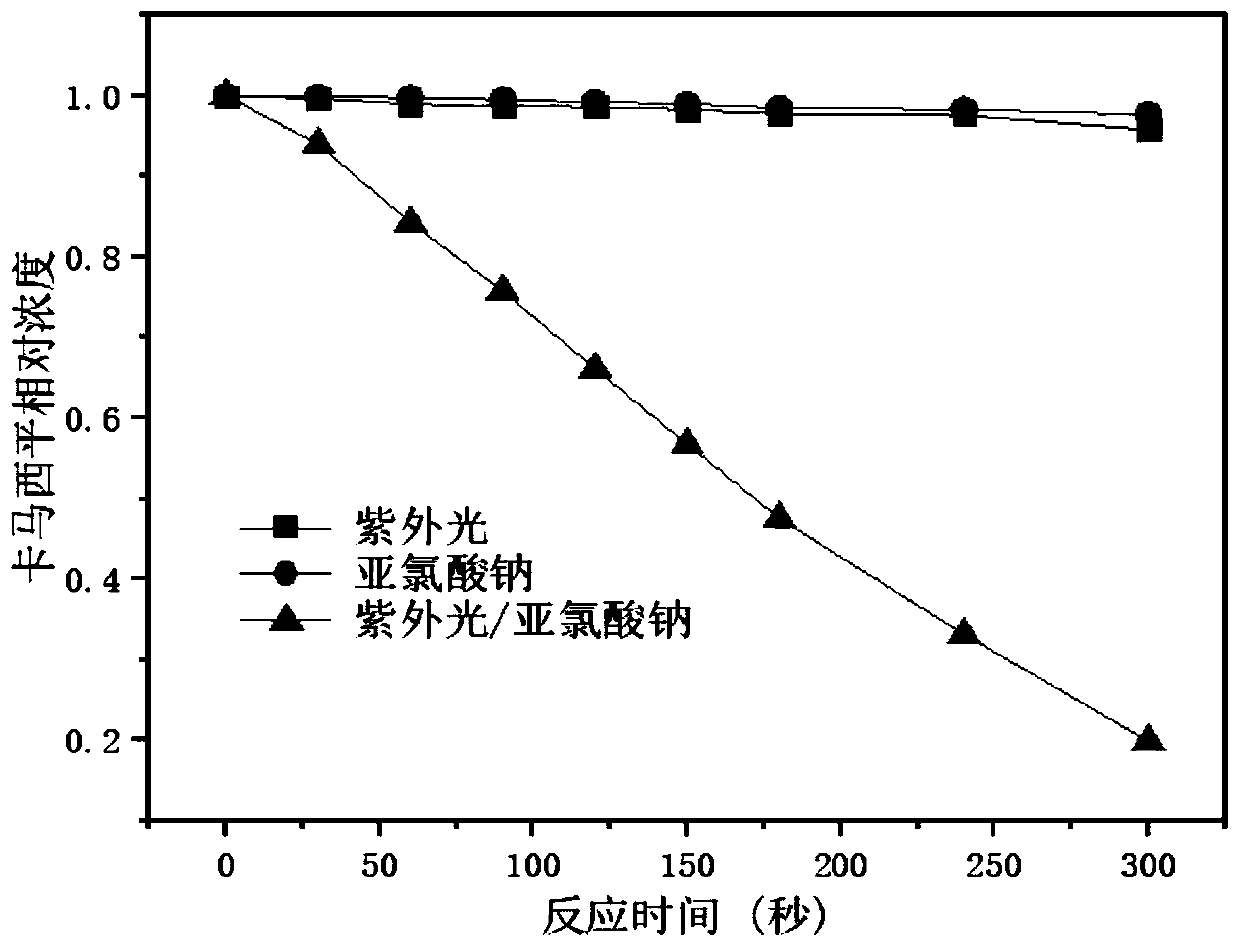Method for synchronously removing chlorite and emerging organic micropollutants in water by ultraviolet light
A chlorite, ultraviolet light technology, applied in the field of water treatment
- Summary
- Abstract
- Description
- Claims
- Application Information
AI Technical Summary
Problems solved by technology
Method used
Image
Examples
Embodiment 1
[0025] This embodiment provides a method for synchronously removing chlorite and emerging organic micro-pollutants in water with ultraviolet light. The specific steps are as follows: prepare an aqueous solution containing micro-pollutants to be treated as a solution to be treated (pH=7.0), the volume is 100 mL, and the initial benzoic acid concentration is 1 μM, (wherein, M is mol / L, and μM is 10 -6 mol / L, mM is 10 -3 mol / L, the same below), the concentration of sodium chlorite is 10μM (this concentration does not exceed the limit of chlorite in the sanitary standard for drinking water (GB5749-2006)), and UV radiation is applied, and the chlorite absorbance Very high, complete degradation is achieved within 30s, and when the illumination time reaches 5min, the removal rate of carbamazepine can reach more than 80%, but neither UV nor sodium chlorite alone can remove carbamazepine.
PUM
 Login to View More
Login to View More Abstract
Description
Claims
Application Information
 Login to View More
Login to View More - R&D
- Intellectual Property
- Life Sciences
- Materials
- Tech Scout
- Unparalleled Data Quality
- Higher Quality Content
- 60% Fewer Hallucinations
Browse by: Latest US Patents, China's latest patents, Technical Efficacy Thesaurus, Application Domain, Technology Topic, Popular Technical Reports.
© 2025 PatSnap. All rights reserved.Legal|Privacy policy|Modern Slavery Act Transparency Statement|Sitemap|About US| Contact US: help@patsnap.com



